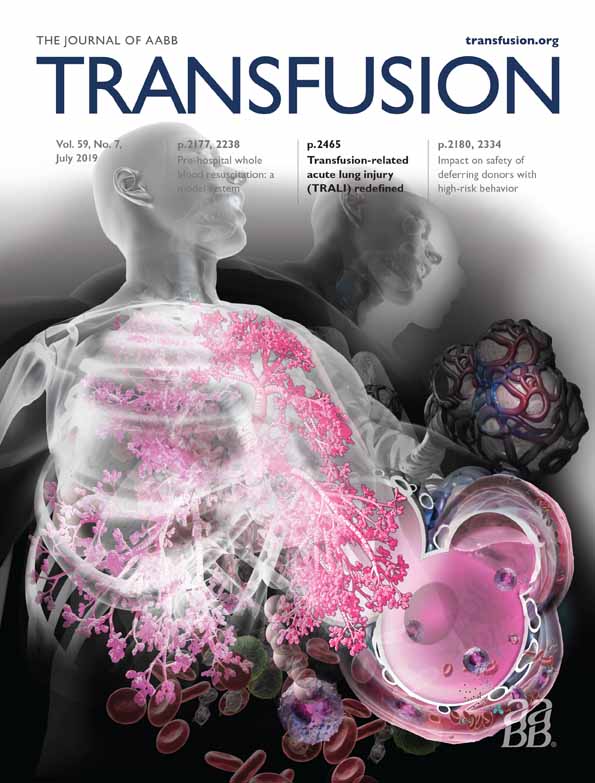Alloimmunization in patients with sickle cell disease and underrecognition of accompanying delayed hemolytic transfusion reactions
Abstract
BACKGROUND
Patients with sickle cell disease (SCD) often require red blood cell (RBC) transfusions but alloimmunization remains a significant complication. Alloantibodies can lead to delayed hemolytic transfusion reactions (DHTRs) days to weeks after a RBC transfusion, but may be underrecognized in patients with chronic hemolysis.
STUDY DESIGN AND METHODS
This retrospective study aimed to determine the incidence and severity of DHTRs associated with new antibody detection in a cohort of 624 patients with SCD who received transfusion with C-, E-, and K-matched RBCs from primarily African American donors over a 14-year period. We identified potential DHTRs by the change in hemoglobin (Hb) and %HbS at baseline, before transfusion, and up to 30 days after the transfusion that preceded new antibody identification.
RESULTS
Laboratory evidence of a DHTR was associated with 54 of 178 evaluable antibodies at first detection (30%), among which less than half were recognized by the patient or provider at the time of the event. A DHTR was associated with 26% of Rh antibodies identified in patients receiving serologic Rh-matched RBCs, and 38% of non-Rh antibodies. Twenty-one of the 54 DHTRs (39%) were associated with a Hb decline greater than 1 g/dL lower than pretransfusion values. Among these 21 severe DHTRs, Rh specificities were identified in 10 of 12 DHTRs in chronically transfused patients, while non-Rh specificities were associated with seven of nine DHTRs in episodically transfused patients.
CONCLUSION
High clinical suspicion and monitoring for DHTRs is warranted, as they may be more common in patients with SCD than previously appreciated.
CONFLICT OF INTEREST
The authors have disclosed no conflicts of interest.




